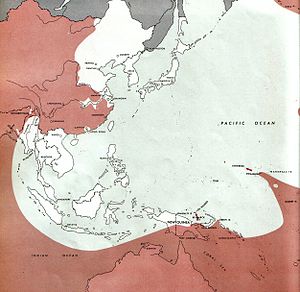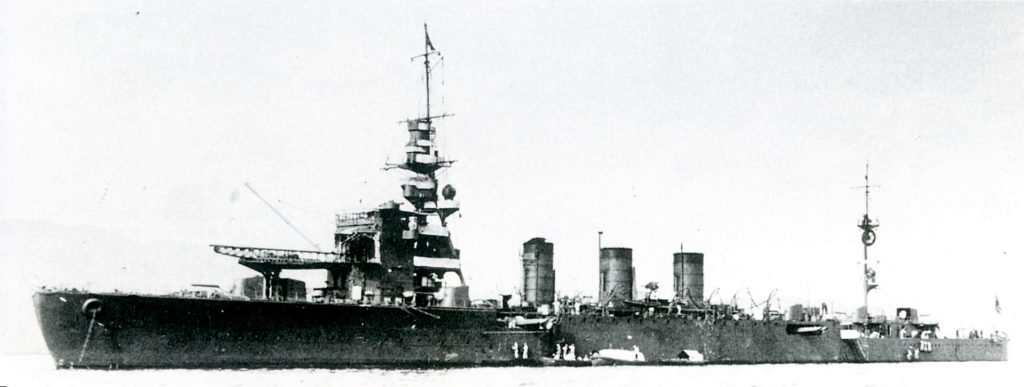18 and 120 Squadrons involved in the Western Australian Emergency – March 1944
Lack of staffing saw a delay in the formation of the 120 (Nederlands East Indies) Fighter Squadron RAAF. It was formed in Canberra and finally was ready for deployment in March 1944. However, as they were preparing for the move an emergency appeared in Western Australia.
On 8 March 1944 the squadron received orders by telephone to send all operational aircraft and a maintenance group with the necessary tools and reserves to Geraldton Air Base about 250 miles north of Perth on the west coast of Australia as soon as possible. Upon arrival, they would receive further instructions.
A similar assignment was also received by 18 NEI Bomber Squadron RAAF in Bachelor, NT.

What was the cause? Strong Japanese fleet units had been observed, which had left the large Japanese fleet base of Truk (Micronesia) and had fallen back to Singapore. The Allies naturally observed these fleet movements closely, and when at night an Allied submarine observed some large ships in the vicinity of Sunda Strait between Java and Sumatra, the suspicion was expressed that a Japanese squadron had entered the Indian Ocean.
This wouldn’t be the first time. Still fresh in the memory was the daring failure of the Japanese admiral Kondo with his battle fleet at Colombo and Trincomalee (Ceylon) in April 1942, in which very serious losses had been inflicted on the British war fleet and the merchant ships in the Bay of Bengal. The Australian government feared an attack on the west coast of Australia, particularly on the large naval port at Fremantle. This could even be an attempt to invade Australia, a thought that had been seriously considered in 1942. The danger had then passed, because the heaviest battles had taken place further north, such as the naval and air battles in the Coral Sea, the battle for the Solomon Islands and the intractable fighting in the northeastern part of New Guinea.

Now the possibility of a Japanese attack on the west coast of Australia, which had been delayed for too long and which was presumably to give Japan back the initiative it had lost in the Solomon Islands, had to be considered once again. That it was also serious for the Dutch proved that already on 9 March 1944 seven P-40s, six C-47 transport aircraft and eon cargo B-25 left for the west, followed by two P-40s, four C-47s and a second cargo B-25. Most of the squadron’s aircraft took off on 13 March: fifteen P-40s, accompanied by three B-25s and one C-47.
The 120 Squadron flew along the south coast of Australia via Adelaide, Ceduna, over the Nullarbor plain and desert to Kalgoorlie to land, refuel and fly on to the Exmouth Gulf and finally reach its destination: the Potshot base. During this flight, it was overtaken by one of the dreaded cyclone storms, why these regions are so notorious.
This is a report from one of the Dutch pilots.
“The trip to this strip wasn’t just one of pink and moonshine. First of all, it’s a distance of about 2800 miles and I had to fly in the most cursed bad weather with maps that weren’t worth a cut. The result was that I got lost in a sandstorm and had to make an emergency landing where I flew through a fence because the field was too small. Anyway, I got off well. The next day I picked up a B-25, which was heading in the same direction, so I flew quietly after him and was quite safe. After three days of endless long hours over those cursed Australian deserts … [illegible] If you make an emergency landing in this area, you are also screwed. We arrived here in the worst weather there was. I couldn’t see a thing but I quietly used the B-25 as my blind flying instrument. Best of all, when I made that landing in the pouring rain and storm, everyone came to compliment me on the beautiful landing. We are lying here in the mud and the mess is indescribable. Fortunately, it is now somewhat dry and the sand is not so dirty. We sleep in rickety tents on the ground, but that’s fine. The pests are terrible and present in large numbers. More tomorrow . . . “
After several weeks of tense waiting, the fear of a Japanese attack proved unfounded and the various squadrons were ordered to return to their own base. An exaggerated fear of a Japanese attack had apparently taken hold of the Australian headquarters. General MacArthur watched the situation carefully but never send any troops from his war theatre in the Pacific to Australia.
The reports from the submarines were found to have been unreliable or misinterpreted. The extensive reconnaissance of the Allies, likewise with the participation of the B-25s of the 18th over the adjacent sea area had yielded nothing.
It was later revealed that the Japanese naval command had decided to withdraw its important units from the Truk naval base, as it feared an American attack, as had happened in the Marshall and Gil Islands during the same period. The new position of the Japanese fleet in Singapore formed part of the ‘silo plan’, which had been devised by the Imperial General Headquarters in Tokyo to deal a devastating blow to Americans in their expected attack on the Philippines.
Moreover, the Japanese fleet in these waters was more favourable for supplying oil mainly from Brunei and Tarakan on the island of Borneo. The Allies had not correctly analysed the intention of the Japanese fleet movement. However, better safe than sorry and this relocation of a number of squadrons on ’24 hour notice’ meant a good exercise in preparedness and mobility.
Source: De Militaire Luchtvaart van het KNIL in de jaren 1942-1945 by O.G. Ward
See also:
Operation Potschot: Dutch airmen in the defence of Western Australia, 1944


